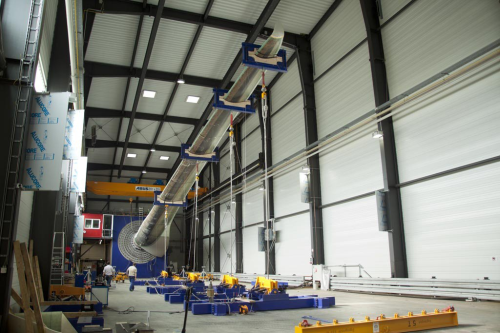
Traditionally, wind turbine blade shells and spars have been bonded using two-component epoxy resins, reports Henkel. While these materials meet the extremely high mechanical specifications of the application, they are reaching their limits when it comes to the automation of the manufacturing process.
Henkel's polyurethane (PUR) adhesive Macroplast UK 1340 satisfies the specific mechanical requirements of the wind power industry and also makes rotor blade production more efficient, claims Henkel.
One of the major benefits of Macroplast UK 1340 is its faster cure, notes Henkel. PUR-based adhesives react much faster than the epoxy resins used up to now. The two-component PUR adhesive is highly reactive and also produces less reaction heat, considerably reducing the duration and the temperature of the cure phase. Tests have shown that substantial reductions can be achieved in bonding and tempering times, claims Henkel.
The lower cure temperature also means the risk of stress cracking due to excessive thermal loading is reduced, and heat-sensitive foam inserts also remain unaffected.
Henkel confirms that Macroplast UK 1340 is the first PUR adhesive to have obtained GL approval. GL’s requirements for the adhesive primarily relate to its tensile shear strength, resistance to ageing, creep behaviour and glass transition.
Wind turbine blades manufactured using Macroplast UK 1340 have already proven their worth in a field trial of more than 12 months, notes Henkel.
The adhesive has also passed load tests performed by the Fraunhofer Institute for Wind Energy and Energy System Technology IWES in Germany. In a long-term test lasting some four months, an ENERCON wind turbine blade bonded with Macroplast UK 1340 was subjected to stresses and strains that would normally occur over a period of 20 years. The bonded joints of the 40 m long blade passed the static and dynamic tests specified in the IEC 61400-23 standard to determine the rated load and fatigue behaviour of the blade.
The test criteria specified for approval of wind energy plants were met without any problems. ENERCON’s own specifications were also satisfied.




